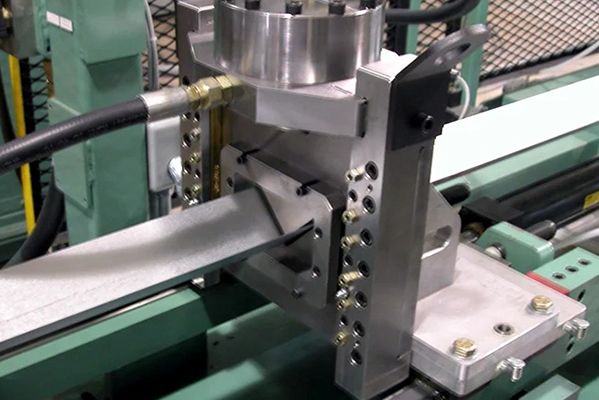Navigation Menu
Contact Us
- Email:
- info@wxavatar.com
- Address:
- Yurong Village, Yuqi Street, Huishan District, Wuxi, China.
Release Date:Jun 07, 2025 Visit:64 Source:Roll Forming Machine Factory
Roll forming machines are fundamentally reshaping contemporary manufacturing processes by offering a unique blend of efficiency, precision, and versatility. This technology, which continuously bends a long strip of metal into a desired cross-section, is proving to be a cornerstone in the production of a wide array of components across various industries.

One of the primary ways roll forming is transforming manufacturing is through its ability to achieve high production rates. Unlike discrete forming operations, roll forming is a continuous process. This seamless operation significantly reduces cycle times, allowing for the rapid production of large volumes of parts. For manufacturers, this translates directly into increased output and the capacity to meet demanding production schedules with greater ease.
Furthermore, roll forming excels in producing parts with exceptional dimensional accuracy and consistency. The progressive nature of the forming stands ensures that the material is gradually shaped, minimizing stress and spring back. This results in components that consistently adhere to tight tolerances, which is critical for applications requiring precise fit and function. The repeatability of the process also reduces scrap rates and the need for post-forming adjustments, contributing to overall operational efficiency.
The versatility of roll forming machines is another key factor in their transformative impact. They can produce complex profiles from a variety of metal types and gauges, including steel, aluminum, and brass. This adaptability allows manufacturers to innovate in product design and create components that were previously difficult or uneconomical to produce. From structural elements in construction to intricate parts in automotive and appliance industries, roll forming offers a robust solution for diverse application needs.
Moreover, the process often leads to material optimization. By forming material into precise profiles, roll forming can reduce the need for welding or additional fabrication steps. This can lead to a more efficient use of raw materials and simpler assembly processes. The ability to create parts with integrated features directly during the forming sequence can further streamline production workflows.

In essence, roll forming machines are not just tools, but catalysts for operational advancement in modern manufacturing. Their contribution to enhanced production speed, precision, and adaptability is enabling industries to achieve new levels of efficiency and product quality, thereby supporting the ongoing evolution of manufacturing practices.